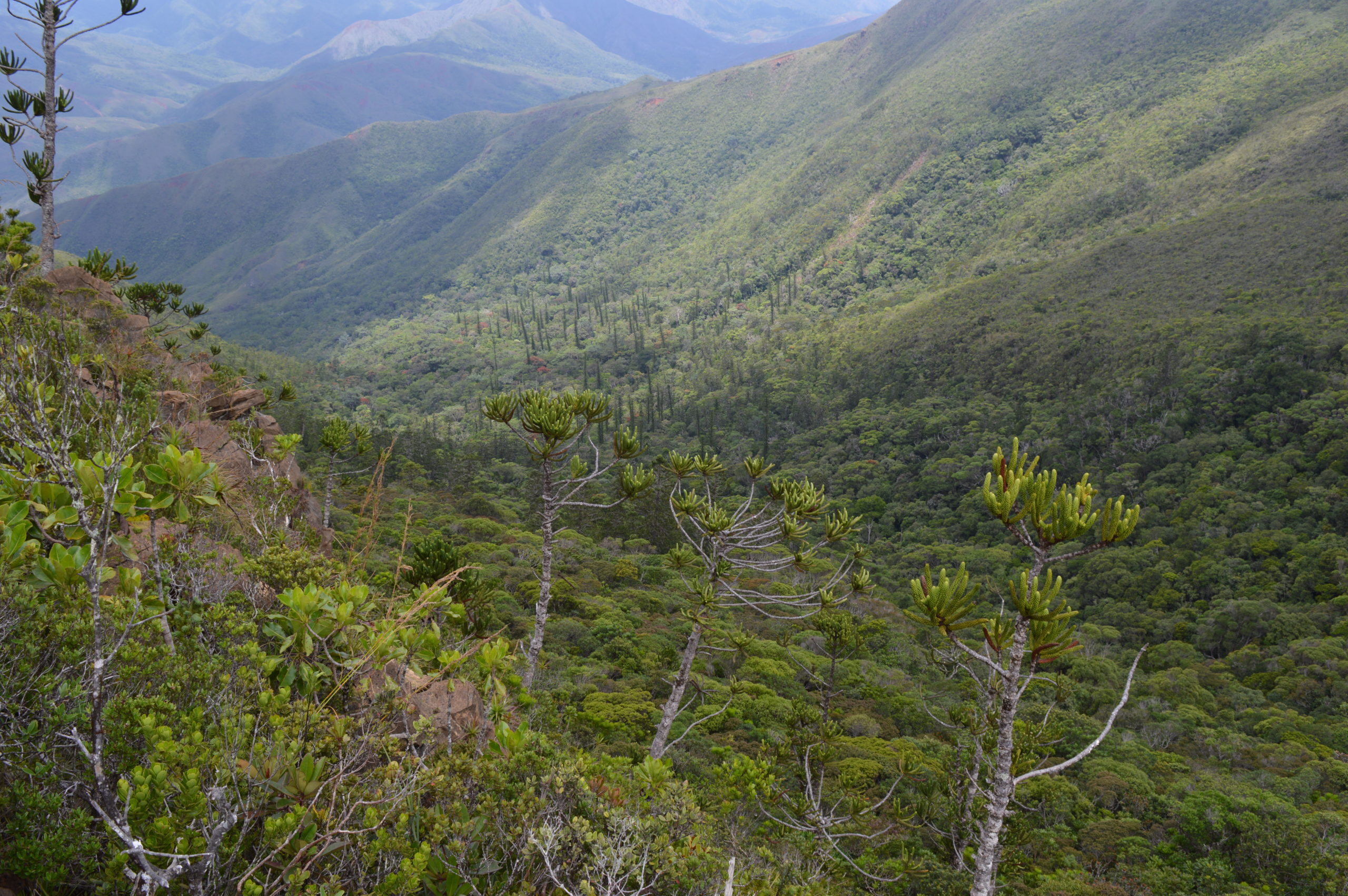The creation of protected areas, whose purpose is the control of activities and restrictions of access, represents the optimal protection for fragile biotopes. Once a natural protected area is consolidated, its durability is assured.
Authorization to destruct (for economic or housing purposes) biotopes within a classified natural area is difficult to obtain. It requires a rather thorough impact study and consultation of the population (public participation). The administrative tribunal, before which the decision to declassify a protected area can be challenged, has the power to annul the declassification procedure on various grounds, particularly with regard to the general interest.
This short article aims at underlining some effective and distinctive features of New-Caledonian environmental law, focusing on the tools developped to protect rare and fragile forests.
The following specificities of New-Caledonian environmental law are worth noting because they could be implemented in other countries facing similar challenges.
1. In the Southern province
-
The South Province Environmental Code (CEPS)
Under the South Province Environmental Code (CEPS), the categories of terrestrial natural protected areas are:
– Strict nature reserves (art. 212-1);
– Nature reserves (art.213-1);
– Sustainable resource management areas (art. 214-1);
– Provincial parks on land (art. 215-1);
It is also possible to note the existence of “natural landscape sites” (articles 220-1), although their aesthetic vocation can only offer indirect protection to the dry forest ecosystem.
It is important to note that the extension of natural terrestrial protected areas can only be carried out on private land upon request and with the agreement of the owners (Article Lp. 211-5 CEPS). This provision considerably restricts the province’s ability to create protected areas unilaterally.

Thy Valley (Vallée de la Thy), South province, New Caledonia (seen from the Koghi mountains)
-
Protection of ecosystems of heritage interest
The dry forest areas benefit from special measures under the protection of ecosystems of heritage interest (article 231-1 and following of the CEPS). The dry forest (or sclerophyllous forest) is specifically covered by this article (2°), whose major interest is the cartographic classification of the biotope (last paragraph).
Articles 231-1 to 235-3 set forth preventive measures (authorization, impact study) and penalties (restoration, fine ranging from 500,000 F CFP /m2 destroyed to 35,000,000 F CFP).
The protection of the dry forest as an ecosystem of heritage interest can be extremely effective if it is integrated with other tools (notably: urban planning documents, the right of pre-emption or eminent domain, public information, the development of protected natural areas…).
2. In the Northern Province
-
Natural protected areas
Article 211-2 of the North Province Environmental Code (CEPN) provides for six categories of protected natural areas:
– Strict nature reserves (art. 211-3);
– Wilderness reserves (art.211-4);
– Provincial parks (art. 211-5);
– Nature reserves (art. 211-6);
– Areas for the protection and enhancement of the natural and cultural heritage (art. 215-1);
– Areas of sustainable management of resources (article 220-1).
-
Prior agreement for the creation of protected areas
Natural protected areas in the North Province are created by deliberation of the North Province Assembly, after consultation with the communes and the customary authorities (Article 211-9 of the FNEC).
Article 211-12 provides a clarification that needs to be emphasized:
The protected natural areas of the North Province are instituted mainly on the public domain (that of communes) but may also be instituted on private domain or customary lands. In these cases, classification as a natural protected area can only be made after the signing of a special agreement between the community and the owner(s) or rightful claimant(s).
Like the South Province, the North Province recognizes customary agreements and integrate them within natural areas bylaws on private or customary lands.
It should be noted that, if no convention is in place, a landowner who considers himself to be adversely affected by a classification can claim just compensation for the loss of his rights of use (see in particular the local law of expropriation or eminent domain regulations). The obligation of the authorities to reach an agreement with the owners or with the customary authorities has the effect of blocking the classification procedure until such agreements are reached.
When such a procedure is not mandatory, the classic approach is to classify the targeted natural area and then compensate its owners.
3. Classification under the Urban Planning Code (Local land use law)
In New-Caledonia, municipalities may establish Superior Urban Plans (PUD) on their territory. These urban planning documents can prescribe land use rules for each of the commune’s predetermined zones, and in particular for “natural zones”.
Although the PUDs classically fulfill an urban management objective for which green spaces only fulfill an aesthetic or amenity function, the wording of article Lp. 112-7 of the Urban Planning Code seems to include a broader orientation integrating the preservation of ecosystems:
“The areas within the municipality territory, whether equipped or not, to be protected or enhanced, in particular because of :
– the quality of sites, environments and natural spaces, landscapes and their interest, particularly from an aesthetic, historical or environmental point of view;
– (…)
– The biological or geological potential of the ground, the subsoil and the sites;
– Their character as natural areas.
In the natural zone, constructions and installations necessary for the preservation of natural spaces and landscapes may be authorized, as long as they do not affect the preservation of natural spaces and landscapes:
– collective equipment or equipment of general interest, as well as public services;
– To farms or activities compatible with the vocation of the zone”.
This ecological purpose is reinforced by article Lp.111-2, which presents a rather broad scope :
“Urban planning documents determine the conditions for ensuring, in compliance with the objectives of sustainable development:
- a) The balance between urban renewal, urban development and the preservation of agricultural and forest areas, sites and natural landscapes, and the economical and controlled consumption of space;
(…)
- e) the preservation of natural resources, biodiversity, ecosystems, green spaces, the preservation and restoration of ecological continuity; (…)”.
The urban planning code therefore clearly sets out an objective of preserving ecosystems from which the protection of the dry forest could benefit.
Once the classification has been established, article Lp.112-11 implies protection measures.
These legal tools have proven effective in a country (autonomous territory whithin the french republic) scarcely inhabited. The protection of ecosystems of heritage interest is particularly effective when coupled with technological means such as satelite cartography.

Recents comments